The bHLH transcription factor Mist1 is required to maintain exocrine pancreas cell organization and acinar cell identity
- PMID: 11696558
- PMCID: PMC2198859
- DOI: 10.1083/jcb.200105060
The bHLH transcription factor Mist1 is required to maintain exocrine pancreas cell organization and acinar cell identity
Abstract
The pancreas is a complex organ that consists of separate endocrine and exocrine cell compartments. Although great strides have been made in identifying regulatory factors responsible for endocrine pancreas formation, the molecular regulatory circuits that control exocrine pancreas properties are just beginning to be elucidated. In an effort to identify genes involved in exocrine pancreas function, we have examined Mist1, a basic helix-loop-helix transcription factor expressed in pancreatic acinar cells. Mist1-null (Mist1(KO)) mice exhibit extensive disorganization of exocrine tissue and intracellular enzyme activation. The exocrine disorganization is accompanied by increases in p8, RegI/PSP, and PAP1/RegIII gene expression, mimicking the molecular changes observed in pancreatic injury. By 12 m, Mist1(KO) mice develop lesions that contain cells coexpressing acinar and duct cell markers. Analysis of the factors involved in cholecystokinin (CCK) signaling reveal inappropriate levels of the CCK receptor A and the inositol-1,4,5-trisphosphate receptor 3, suggesting that a functional defect exists in the regulated exocytosis pathway of Mist1(KO) mice. Based on these observations, we propose that Mist1(KO) mice represent a new genetic model for chronic pancreas injury and that the Mist1 protein serves as a key regulator of acinar cell function, stability, and identity.
Figures

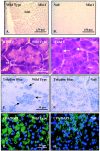
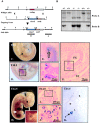



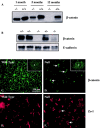
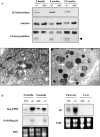
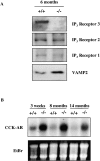
References
-
- Bottinger, E.P., J.L Jakubczak, I.S. Roberts, M. Mumy, P. Hemmati, K. Bagnall, G. Merlino, and L.M. Wakefield. 1997. Expression of a dominant-negative mutant TGF-beta type II receptor in transgenic mice reveals essential roles for TGF-beta in regulation of growth and differentiation in the exocrine pancreas. EMBO J. 16:2621–2633. - PMC - PubMed
-
- Burghardt, B., K. Kisfalvi, G. Varga, and M. Papp. 1998. Agonists and antagonists of regulatory peptides as tools to study regulation of pancreatic exocrine secretion, cell proliferation, and gene expression. Scand. J. Gastroenterol. Suppl. 228:11–20. - PubMed
-
- Chirgwin, J.M., A.E. Przybyla, R.J. MacDonald, and W.J. Rutter. 1979. Isolation of biologically active ribonucleic acid from sources enriched in ribonuclease. Biochemistry. 18:5295–5299. - PubMed
-
- Cockell, M., D. Stolarczyk, S. Frutiger, G.J. Hughes, O. Hagenbüchle, and P.K. Wellauer. 1995. Binding sites for hepatocyte nuclear factor 3β or 3γ and pancreas transcription factor 1 are required for efficient expression of the gene encoding pancreatic alpha-amylase. Mol. Cell. Biol. 15:1933–1941. - PMC - PubMed
Publication types
MeSH terms
Substances
Grants and funding
LinkOut - more resources
Full Text Sources
Molecular Biology Databases
Research Materials
Miscellaneous

